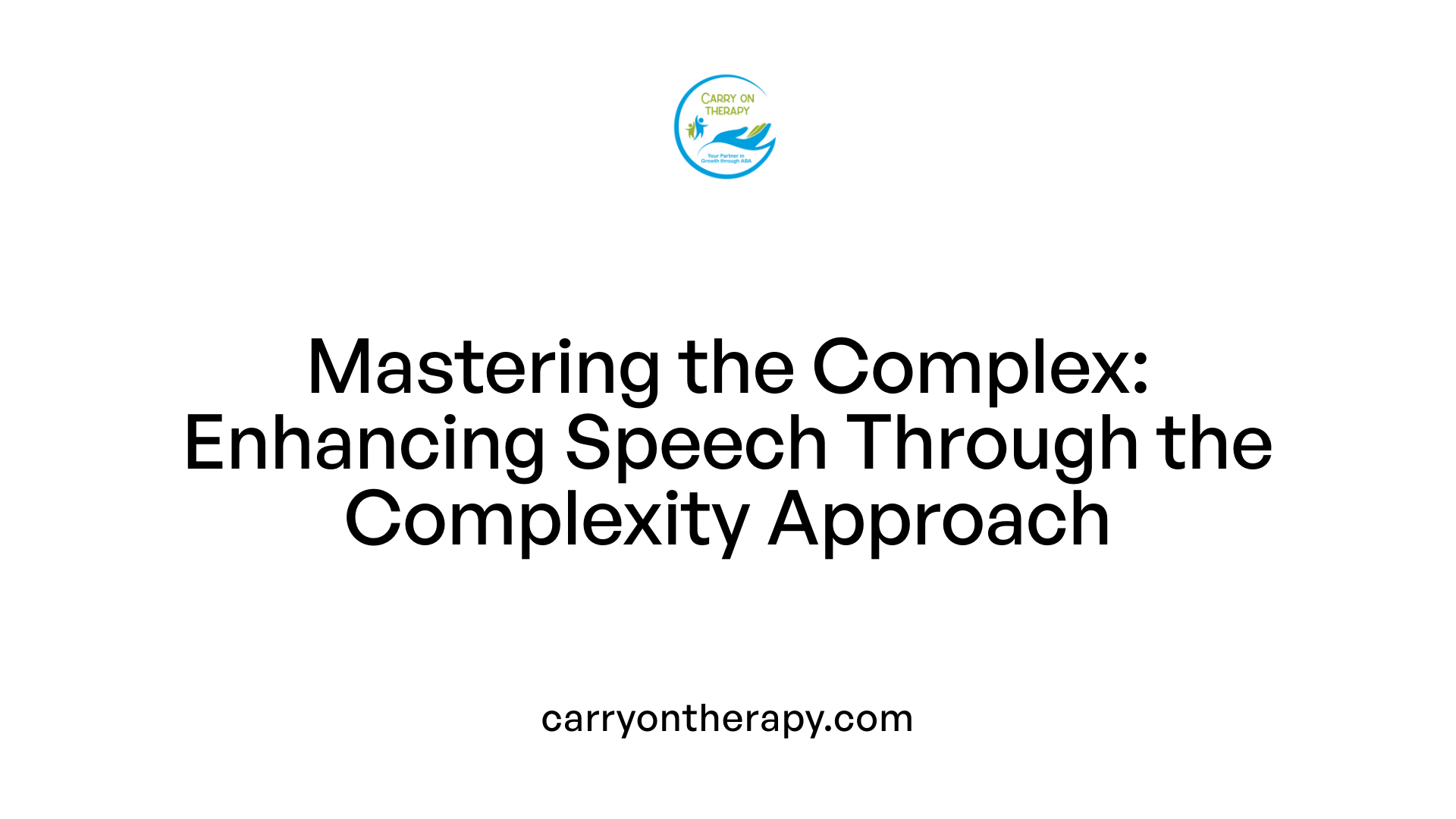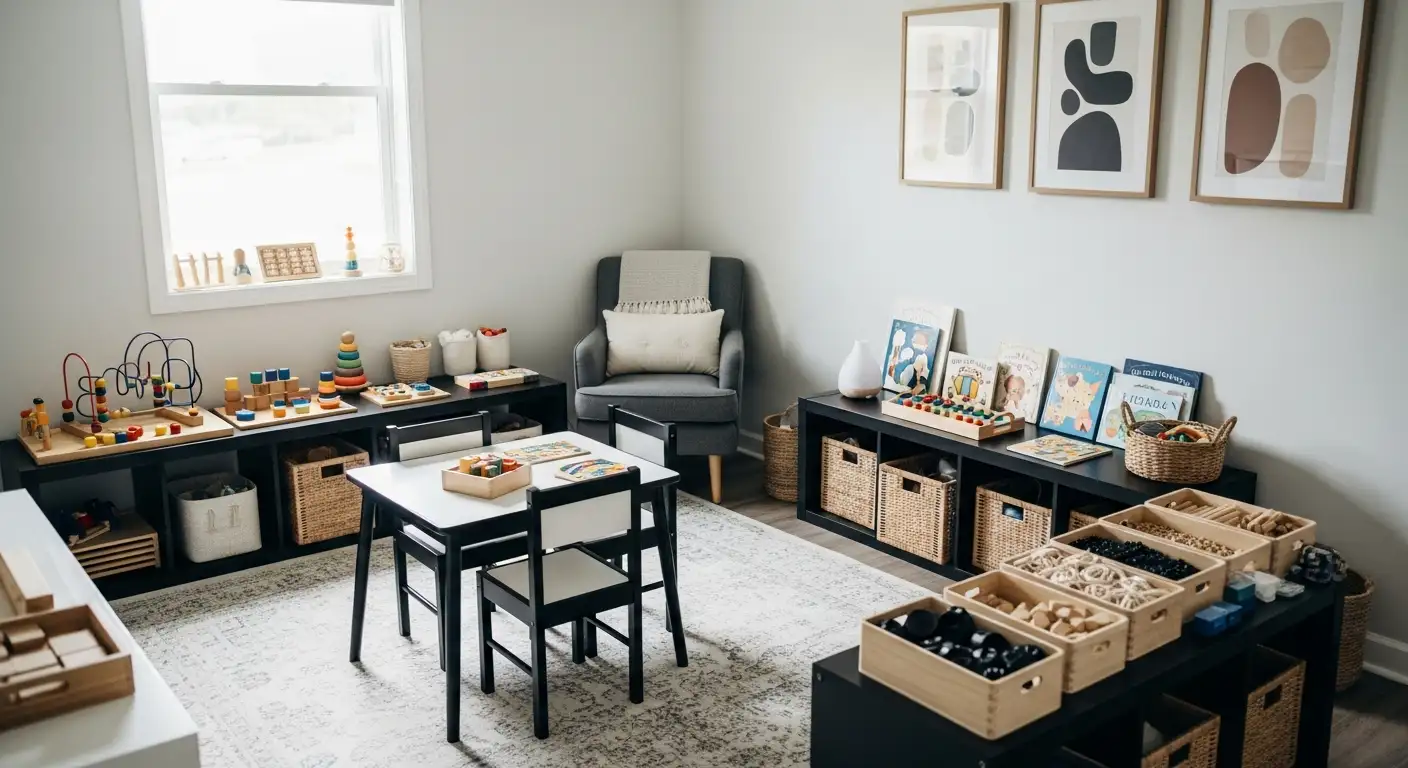The Benefits of Speech Therapy for Children Struggling with Phonological Disorders
Unlocking Communication Potential: How Therapeutic Interventions Support Children with Phonological Disorders

Understanding Phonological Disorders and the Role of Therapy
Phonological disorders affect a child's ability to produce clear and understandable speech due to difficulties in the sound system and patterns of language. Speech therapy, among other interventions, plays a critical role in helping these children overcome speech challenges by improving articulation and communication skills. This article explores the benefits of speech therapy for children struggling with phonological disorders, highlighting proven techniques and the synergy of combining behavioral and communication-focused therapies.
Foundations of Speech Therapy for Phonological Disorders

What is speech therapy and how does it support children with phonological disorders?
Speech therapy is a specialized intervention that addresses language and communication challenges, helping children express themselves more effectively. For those with phonological disorders, speech therapy focuses on improving the clarity of their speech by targeting sound production issues and enhancing overall communication abilities.
Goals of speech therapy for phonological disorders
The primary goals include increasing speech intelligibility, supporting language comprehension, and fostering effective communication. Speech therapy aims to help children produce sounds correctly, understand language better, and use appropriate communication methods to interact successfully with others.
Techniques used in speech therapy
Articulation Therapy: Focuses on helping children pronounce sounds more clearly by practicing the muscles and movements required for speech.
Oral Motor Therapy: Strengthens the oral muscles involved in speech to improve control and coordination for better sound production.
Augmentative and Alternative Communication (AAC) Devices: These tools support children who have trouble speaking verbally, enabling them to communicate effectively through devices such as picture boards, speech-generating devices, or apps.
By combining these techniques, speech therapy provides a tailored approach that addresses the diverse needs of children with phonological disorders, promoting meaningful improvements in their communication skills.
The Complexity Approach in Phonological Therapy: Targeting Harder Sounds First

What is the Complexity Approach in phonological therapy and why is it important?
The Complexity Approach in phonological therapy is a strategic method that begins by targeting more difficult, later-developing speech sounds instead of the simpler, earlier-acquired ones. This approach is designed to stimulate broad and systemic improvements across a child's entire speech system, rather than focusing narrowly on isolated sounds.
Rationale Behind Starting with Complex, Later-Developing Sounds
Focusing on harder sounds first creates a ripple effect that helps reorganize the child’s entire phonological system. This systemic change encourages the acquisition of simpler sounds as a natural consequence of mastering the complex targets, leading to more comprehensive and lasting improvements in speech clarity.
Age Group Best Suited for the Complexity Approach
The Complexity Approach is especially suitable for children aged 3 to 6 years who demonstrate moderate to severe phonological disorders. It is particularly effective for those struggling with specific, complex speech sounds and who score below the fifth percentile on articulation assessments.
Research Supporting the Effectiveness of the Approach
Research findings endorse the efficacy of this method, showing that teaching complex sounds first not only accelerates progress but also promotes more durable and widespread improvements in children's speech capabilities.
Clinical Implementation Strategies
Clinicians typically conduct comprehensive phonological inventories to identify the most complex, non-stimulable, and late-acquired sounds to target in therapy. By doing so, therapy encourages system-wide change rather than isolated progress. Additionally, collaboration with parents and caregivers is crucial; their support in reinforcing practice during daily routines and encouraging a positive attitude toward challenging sounds helps maximize therapy outcomes.
Collaboration Between Speech Therapy and Applied Behavior Analysis (ABA)

What is ABA therapy and how is it used to support individuals with autism?
ABA therapy is a science-based treatment that uses behavioral principles to support children with autism. It considers all human actions, including language, as behavior and breaks communication into types like Mand, Tact, Intraverbal, and Echoic verbal operants. ABA applies positive reinforcement and consequences to increase helpful behaviors such as improved communication, social skills, and academic abilities, while reducing problematic behaviors like tantrums and aggression. Techniques like Discrete Trial Training and Functional Communication Training are often used to develop communication skills.
How does ABA complement speech therapy in communication development?
While ABA focuses on shaping behaviors and teaching new skills through reinforcement, speech therapy specifically addresses communication challenges like articulation, language comprehension, and fluency. Speech therapy uses tools such as Augmentative and Alternative Communication (AAC) devices, Oral Motor Therapy, and articulation exercises. When combined with ABA, speech therapy complements behavioral learning by targeting specific speech and language issues. Together, they speed communication progress, help generalize skills across settings, and reduce frustration that could cause challenging behaviors.
Who provides ABA therapy and what qualifications do they have?
ABA therapy is primarily delivered by Board Certified Behavior Analysts (BCBAs) and registered behavior technicians (RBTs). BCBAs hold advanced degrees in applied behavior analysis and have passed certification exams, qualifying them to design individualized treatment plans. RBTs implement ABA techniques under supervision after specialized training and competency testing. Their professional expertise ensures the therapy is effective, ethical, and tailored to each child's unique needs.
Benefits of combining these therapies
Combining ABA and speech therapy offers a powerful approach for children with autism, fostering better outcomes than either therapy alone. This integrated approach improves communication (both verbal and nonverbal), enhances social skills through understanding cues and conversation initiation, and promotes independence. It also reduces challenging behaviors by improving a child’s ability to express needs and interact socially.
Strategies for integration and coordination of therapy plans
Effective collaboration between BCBAs and speech-language pathologists includes creating unified and individualized intervention plans. Joint goal setting ensures aligned strategies that support skill generalization across environments, such as home, school, and community. Consistent communication between therapists and parents further strengthens progress. Providing in-home therapy services helps children learn in a familiar environment, reducing stress and boosting engagement.
| Aspect | ABA Therapy | Speech Therapy | Collaborative Benefits |
|---|---|---|---|
| Focus | Behavior modification and skill development | Speech, language, and communication skills | Enhanced communication and social interaction |
| Techniques | Discrete Trial Training, Functional Communication | AAC devices, Articulation and Oral Motor Therapy | Coordinated, tailored intervention plans |
| Providers | Board Certified Behavior Analysts (BCBAs), RBTs | Speech-Language Pathologists | Interdisciplinary teamwork for comprehensive support |
| Target Outcomes | Increase desired behaviors, reduce challenging behaviors | Improve verbal/nonverbal communication, fluency | Generalization of skills, reduced frustration |
| Ideal Start Time | Around age 2, early intervention critical | Early intervention, ideally beginning by age 2 | Consistency and parental involvement increases success |
Maximizing Outcomes: The Synergy of Integrating Speech Therapy with ABA
How does combining speech therapy with ABA enhance communication and social skills?
Integrating speech therapy with ABA harnesses the strengths of both approaches to significantly improve communication and social skills in children with autism. ABA therapy uses reinforcement techniques to increase functional communication, social interaction, and reduce challenging behaviors. Speech therapy complements these efforts by targeting specific language skills such as articulation, fluency, and comprehension, often incorporating tools like Augmentative and Alternative Communication (AAC).
This combination promotes a faster acquisition of verbal and nonverbal skills and supports the generalization of learned behaviors across settings, including home and school. Improved communication reduces frustration, which in turn decreases behavioral issues and fosters the development of important social abilities like initiating conversations and interpreting nonverbal cues.
What are examples of joint techniques used in ABA and speech therapy?
One prime example is Functional Communication Training (FCT), which is anchored in ABA principles but directly addresses speech and communication needs. FCT teaches children alternative, appropriate ways to make requests (mands) to replace challenging behaviors. Other joint techniques include Discrete Trial Training combined with articulation practice and Incidental Teaching that encourages spontaneous communication in natural environments.
By aligning objectives, therapists ensure that speech goals and behavioral interventions reinforce each other, creating a cohesive learning experience that is personalized for each child's unique needs.
What does research say about improved outcomes from integrated therapy?
Research consistently supports that combining ABA with speech therapy results in better communication outcomes than either approach alone. Studies indicate increases in vocal requests, labeling, and use of AAC devices for nonverbal children. Enhanced communication competence correlates with fewer tantrums, aggression, and self-injury incidents.
Early, intensive interventions beginning around age two with consistent parental involvement yield the greatest benefits. Collaborative efforts between Behavior Analysts and Speech-Language Pathologists underpin these positive results by providing unified strategies and continuous progress monitoring.
Why are consistent early intervention and parental involvement critical?
Both therapies are most effective when started early, ideally by age two, allowing children to build foundational skills during vital developmental windows. Regular therapy sessions combined with consistent practice at home amplify learning.
Parental involvement is crucial — caregivers who reinforce therapy targets in daily routines help solidify skills and reduce the child's anxiety around new challenges. Celebrating effort rather than perfection creates a positive environment that encourages ongoing progress and resilience.
How does ABA benefit individuals with autism more than other treatments?
ABA stands out due to its scientific rigor and individualized behavioral methods that produce measurable gains. It addresses both skill development and behavioral challenges through structured techniques, making it highly adaptable to each child’s profile. When paired with speech therapy, the approach further enhances communication skills and overall independence.
What challenges arise in ABA therapy and how can they be managed?
Maintaining engagement and motivation can be difficult during repetitive tasks. Resistance to new routines or frustration also occurs. Overcoming these challenges requires building strong rapport, incorporating preferred activities, consistent positive reinforcement, and involving families as active partners.
Together, these strategies create sustainable interventions that align with children’s needs and promote a positive, effective therapeutic journey.
Supporting Families: The Role of Caregivers in Speech and ABA Therapies
Why is parental involvement critical for therapy success?
Parental involvement plays a vital role in the effectiveness of both ABA and speech therapies for children with autism. Consistent engagement from caregivers ensures that therapeutic goals are reinforced throughout daily routines, leading to better skill retention and generalization beyond clinical settings.
How can parents and caregivers reinforce therapy goals at home?
Caregivers can support therapy by integrating practice opportunities into everyday activities. For example, they might encourage the child to use new communication skills during mealtime or play. Framing difficult sounds or behaviors as normal challenges and celebrating effort rather than perfection helps maintain a positive environment that fosters ongoing learning.
What are some strategies for encouraging practice and positive communication habits?
- Embedding therapy exercises naturally into fun and familiar routines
- Using encouragement and positive reinforcement to motivate the child
- Modeling language and social behaviors consistently
- Maintaining patience and celebrating small successes to boost confidence
How does home-based therapy impact outcomes for children with autism?
Providing ABA and speech therapy services at home offers a comfortable, familiar environment that reduces stress for the child. This setting supports learning and encourages natural use of skills in daily life, promoting greater independence and smoother skill generalization across different situations.
By actively involving families and providing in-home support, therapy programs become more effective, helping children with autism improve communication, behavior, and social skills with sustained progress over time.
Future Directions and Supportive Technologies in Phonological Therapy

Advances in Augmentative and Alternative Communication (AAC) Technologies
Recent years have seen significant improvements in AAC devices, making communication more accessible for children with phonological disorders. These technologies now offer more intuitive interfaces, personalized vocabulary options, and portability, enabling children to communicate effectively in varied settings.
How Technology Assists Speech Therapy
Technology supports speech therapy by providing interactive tools that engage children in practicing sounds and language skills. Applications and computer programs offer real-time feedback, gamified learning, and progress tracking, which help tailor therapy to each child's unique needs.
Potential for Home-Based Therapy Models
With the rise of teletherapy and mobile tools, speech therapy can be effectively delivered in the home environment. This not only ensures consistency but also reduces stress for children, allowing practice during natural daily routines and increasing parental involvement.
Ongoing Research and Clinical Innovations
Current research explores the integration of artificial intelligence and machine learning in therapy tools to adapt exercises dynamically and improve outcomes. Clinicians are also investigating new approaches that combine technology with behavioral strategies to enhance generalization of communication skills across environments.
Bridging Communication Gaps Through Holistic Speech Therapy Approaches
Speech therapy remains a cornerstone for children struggling with phonological disorders, providing tailored techniques that address diverse speech challenges. When combined with behavioral therapies such as ABA, it creates an integrative framework that not only enhances communication but also supports social and adaptive skills development. Early intervention, professional collaboration, and active caregiver participation are crucial to maximizing therapy outcomes. Advances in therapy techniques and technology continue to deliver hope and improved quality of life for children facing phonological and communication challenges.
References
- ABA Therapy vs Speech Therapy for ASD: Which is Better ...
- How Speech Therapy Enhances ABA Therapy - Childwise ABA
- Reimagining Phonological Therapy with the Complexity ...
- Combining ABA With Speech Therapy
- ABA and other therapies
- How Effective Is ABA Therapy? Understanding the Success ...
- Applied Behavior Analysis (ABA)
- Who Qualifies for ABA Therapy: Eligibility Guide
- How to Become an Applied Behavior Analyst (ABA) Therapist
- Applied Behavior Analysis (ABA)







